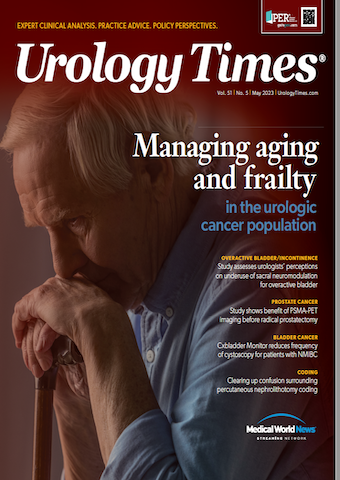Publication
Article
Urology Times Journal
Racial and ethnic disparities observed in patients undergoing pelvic organ prolapse surgery
Author(s):
Black race was identified as an independent predictor of 30-day readmission even after investigators controlled for differences in patient demographics, clinical factors, and comorbidities.
The investigators used data from the American College of Surgeons National Surgical Quality Improvement Program (ACS-NSQIP) clinical registry database.

Racial and ethnic disparities were observed among patients undergoing pelvic organ prolapse (POP) surgery in the United States in regard to prevalence, patients’ baseline characteristics, types of POP surgery performed, and types of postoperative complications. Black race was also found to be a predictor for hospital readmission following surgery.1
The investigators used data from the American College of Surgeons National Surgical Quality Improvement Program (ACS-NSQIP) clinical registry database to identify 50,561 women who underwent POP surgery from 2012-2017. The data were stratified by race and ethnicity, with race characterized as “Black,” “White,” or “Other,” and ethnicity characterized as “Hispanic” or “Non-Hispanic.”
Primary outcome end points were measured up until 30 days following the operation and included surgical complications, readmission, reoperation, and mortality. Secondary outcome measures included type of POP performed, hospital length of stay, and mean operative time. Patient baseline characteristics and prevalence were also considered.
Data showed that the prevalence of POP procedures was higher in White women (89.8% of patients) than Black (5.5%) and Others (4.7%). Hispanic patients only made up 11.2% of the patient cohort. In comparison with White patients, Black and Hispanic patients tended to be younger, have a higher BMI, and suffer from a higher number of comorbidities.
There were also significant differences in the types of POP procedures performed, which were categorized using CPT codes. In comparison with other racial groups, Black patients were more likely to undergo apical repair procedures (P < .001) and less likely to undergo combination POP procedures (P < .001). Black and Other patients were also more likely to receive POP repair with concomitant hysterectomy (P < .001) than White patients. Patients in the Other group were more likely to undergo obliterative (P < .001) and posterior (P < .001) procedures compared with other racial groups.
There were no significant differences in complication rates among different racial or ethnic groups. However, the types of complications varied for patients. Black (P < .001) and Hispanic (P < .001) patients were more likely to need blood transfusion. However, Black patients were less likely to develop post-operative urinary tract infections than other racial groups (P < .001).
Race and ethnicity were not found to be predictors of re-operation or mortality, but Black race was identified as an independent predictor of 30-day readmission (P = .009). This was still true after investigators controlled for differences in patient demographics, clinical factors, and comorbidities.
The investigators did not identify any reasons for these disparities.
“Although we are unable to determine the causes of these disparities, our study provides a better understanding of the current racial and ethnic disparities in POP surgery, which can help identify at-risk populations and lead to improved preventative measures to ultimately reduce this disparity health outcomes gap,” wrote the authors, led by Dayron Rodriguez, MD, MPH.
Reference
1. Rodríguez D, Goueli R, Lemack G, Zimmern P, Carmel M. Racial and ethnic disparities in pelvic organ prolapse surgery in the United States: an analysis of the ACS-NSQIP clinical registry. Urology. Published online February 9, 2023. Accessed February 9, 2023. doi:10.1016/j.urology.2023.01.021

Newsletter
Stay current with the latest urology news and practice-changing insights — sign up now for the essential updates every urologist needs.




























